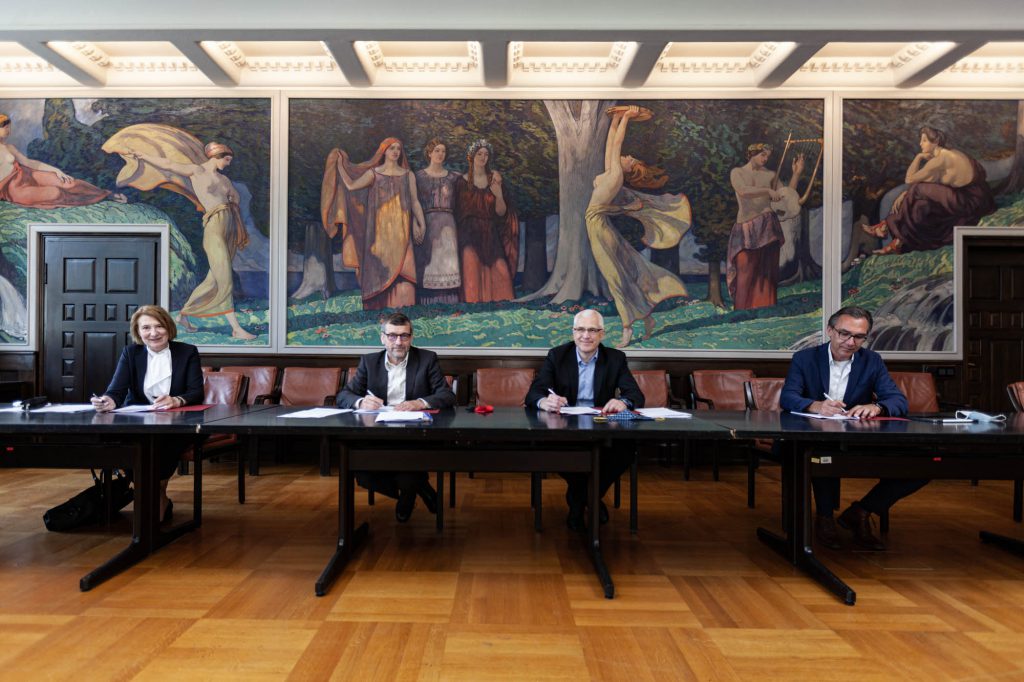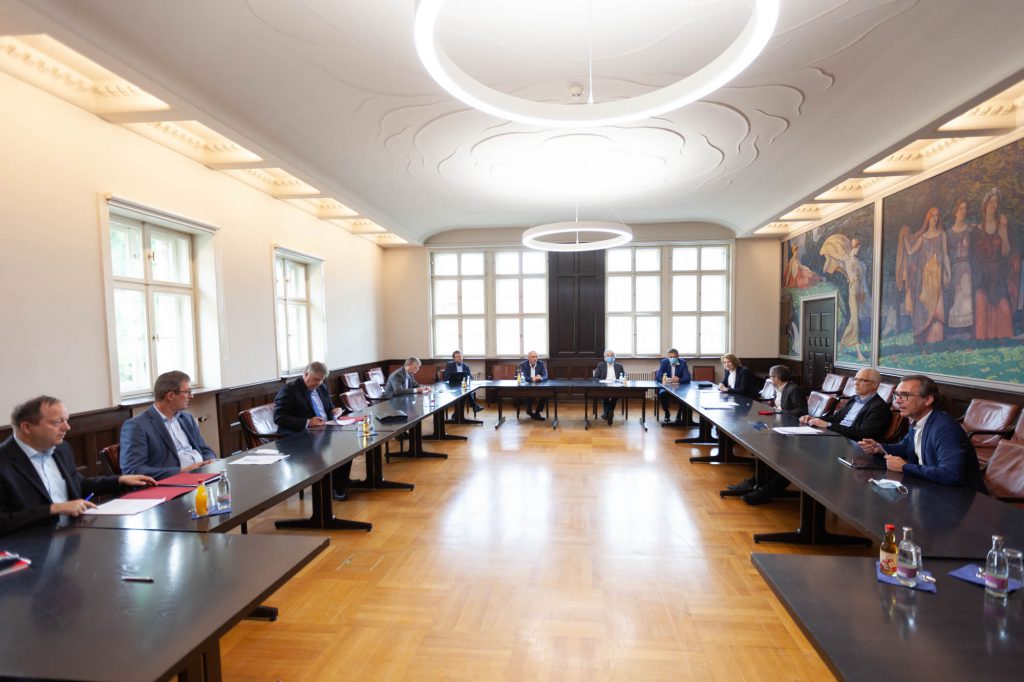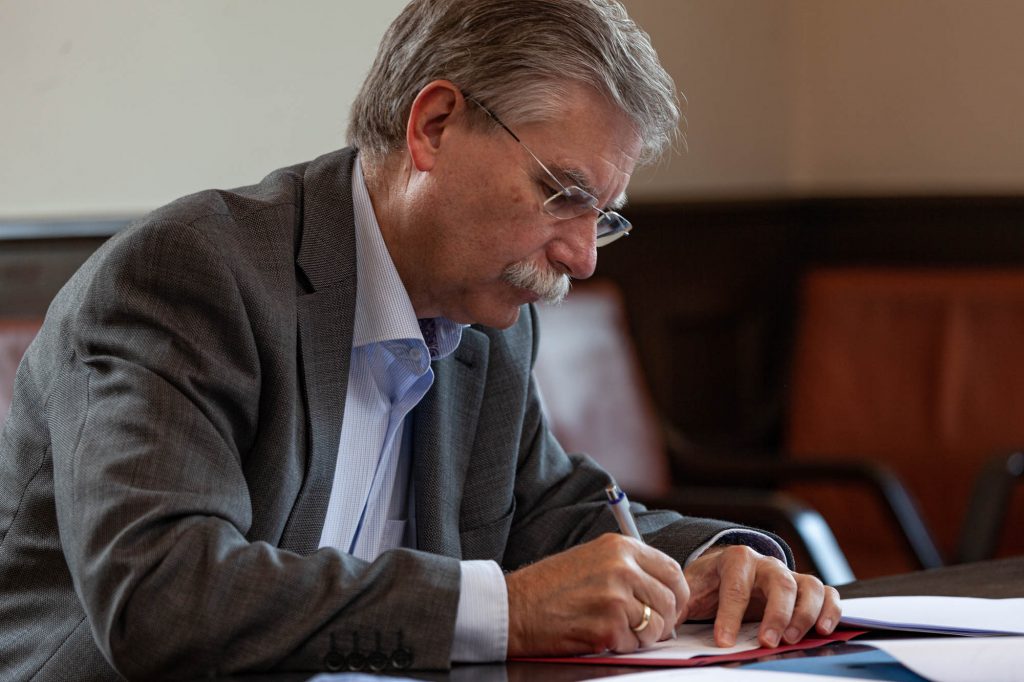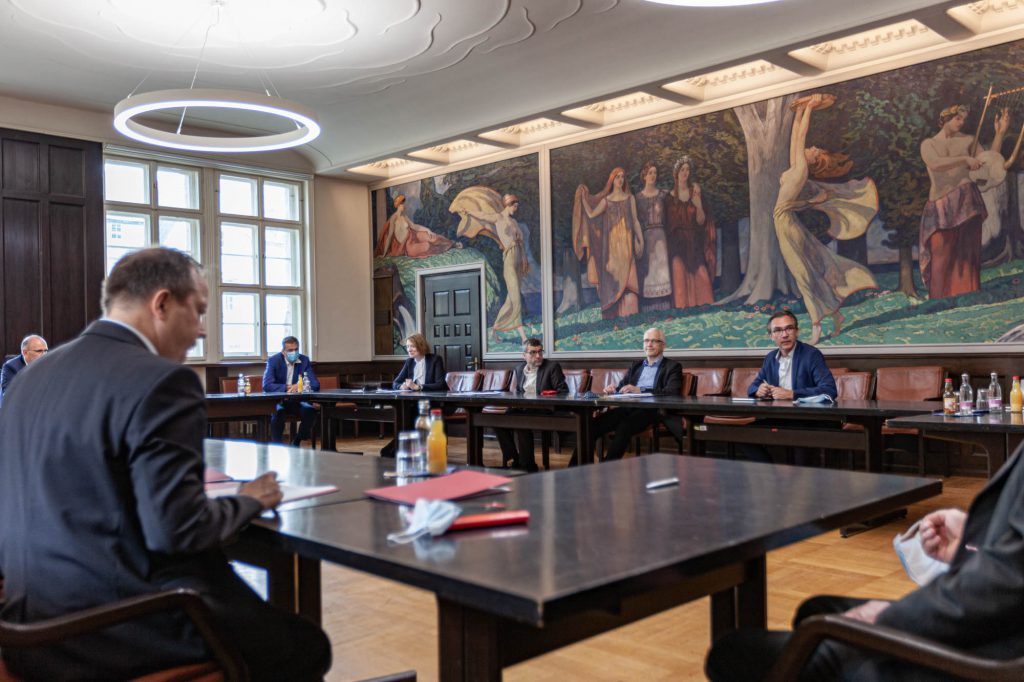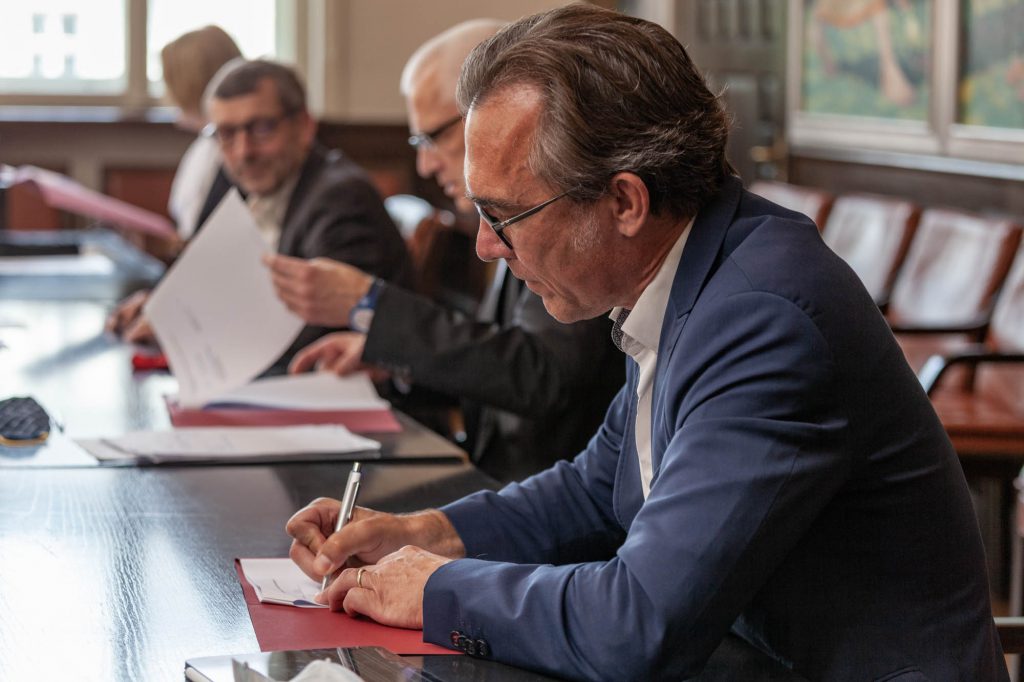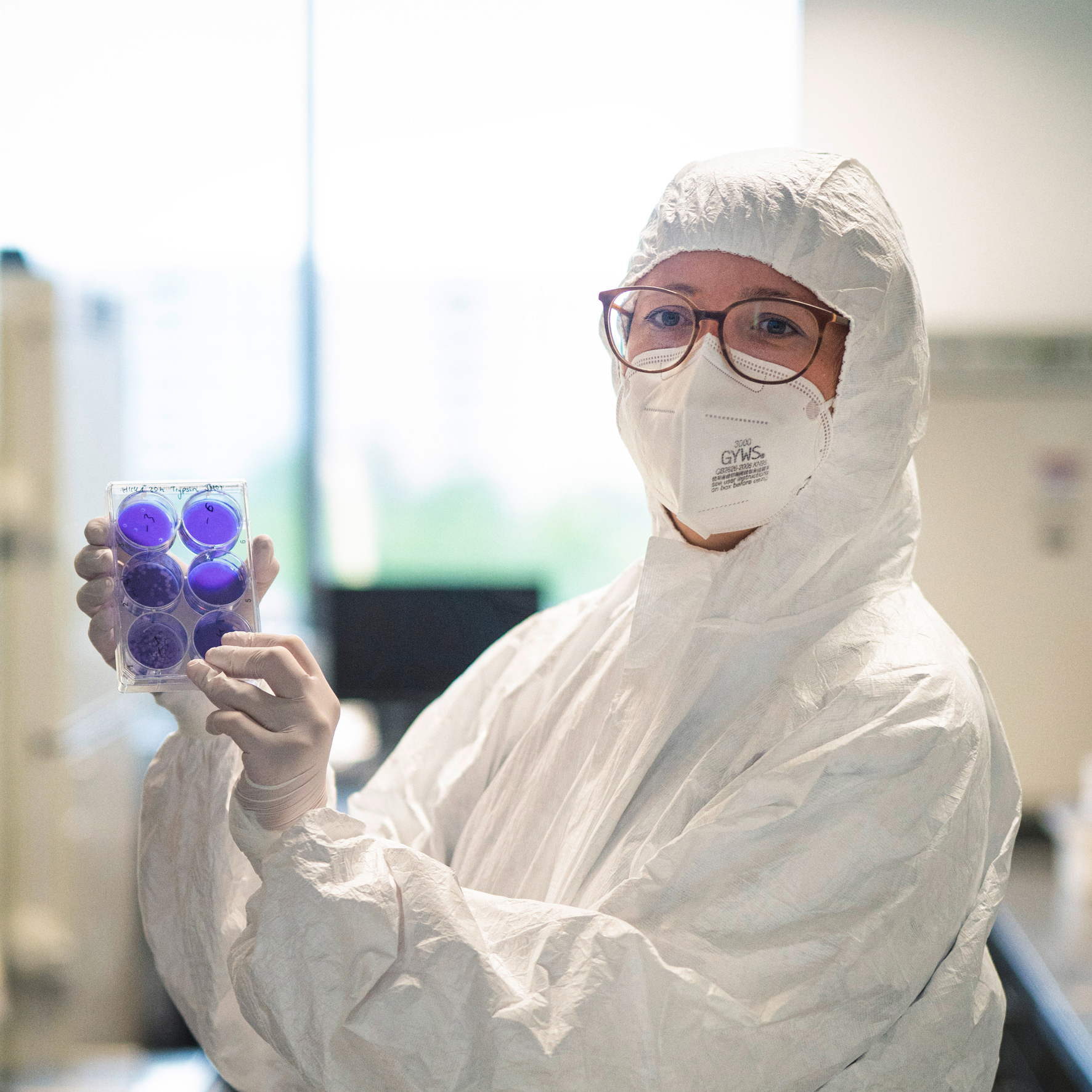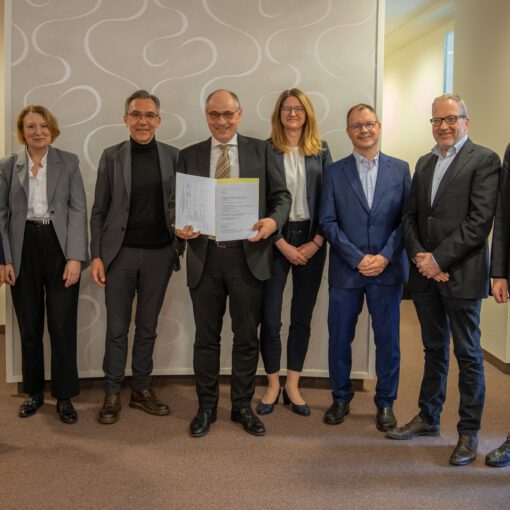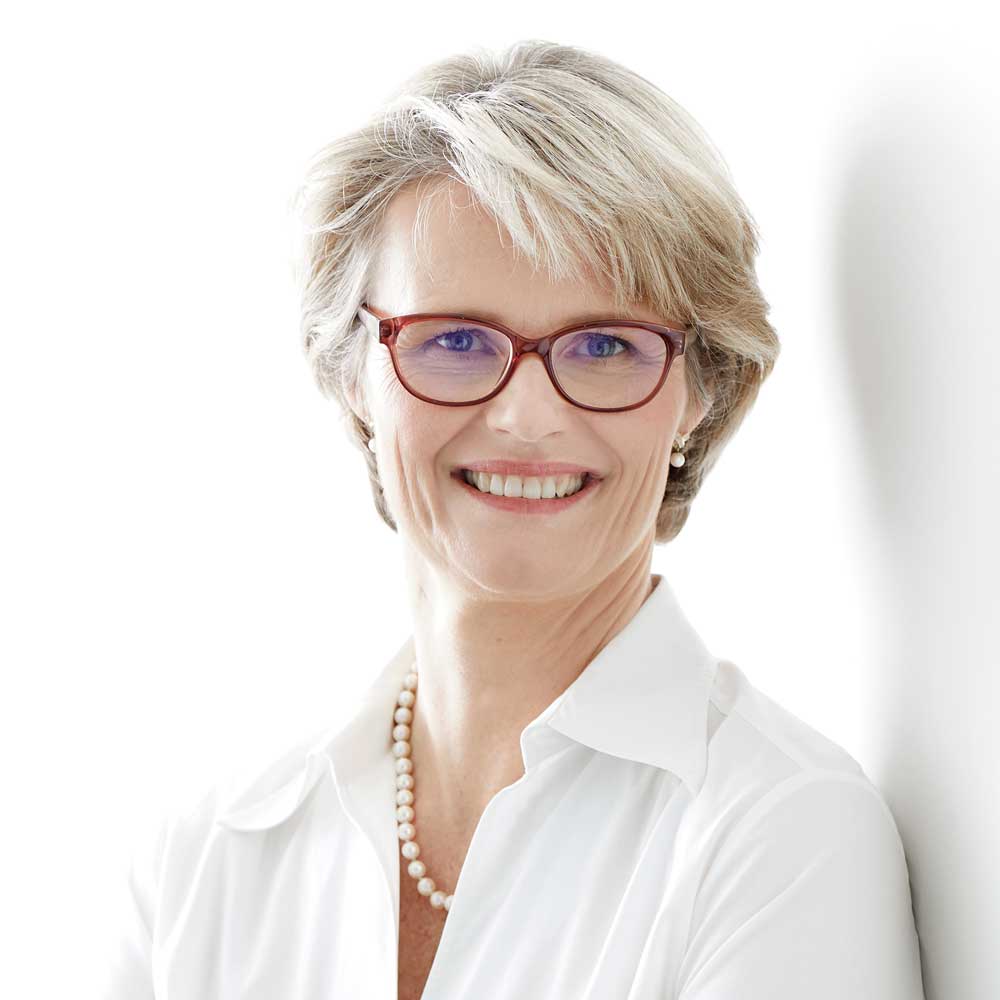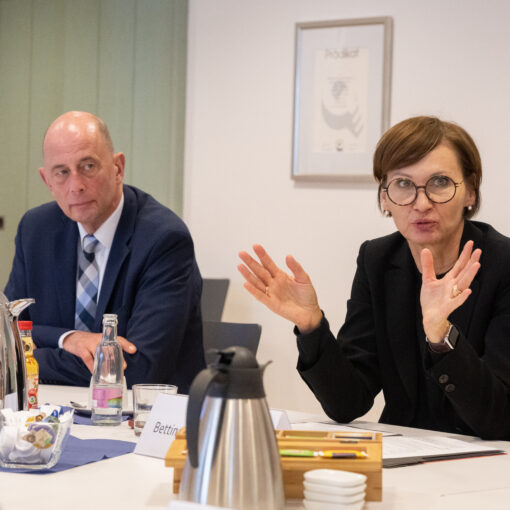Four Jena research institutions sign cooperation agreement for Europe-wide unique research infrastructure for the investigation of light-based health technologies.
The new Leibniz Center for Photonics in Infection Research (LPI) in Jena will start on July 1, 2020 with specific projects for the research of light-based technologies for the diagnosis and therapy of infectious diseases. In parallel, its administrative structures are being established. “The Corona pandemic shows us how urgently we need new approaches in the fight against infectious diseases. LPI is creating a research infrastructure here in Jena that is unique in Europe for international scientists to jointly research such solutions and quickly bring them to market,” said Prof. Dr. Jürgen Popp, scientific director of the Leibniz Institute for Photonic Technologies (Leibniz-IPHT) and spokesperson for the new research center, on the occasion of the signing of the cooperation agreement for LPI in Jena on June 17, 2020.
The center, which is to be funded by the federal government with 124 million euros, is supported by four Jena partners: the Friedrich Schiller University of Jena, the University Hospital, the Leibniz IPHT and the Leibniz Institute for Natural Product Research and Infection Biology – Hans Knöll Institute (Leibniz HKI). “This new research building on the grounds of our hospital profiles the campus in Lobeda not only as a central location for interdisciplinary university patient care, but also as an integration center for clinical research and basic research,” said Dr. Brunhilde Seidel-Kwem, spokesperson for the Board of Directors of Jena University Hospital. The official construction phase for the new Leibniz Center will begin in January 2021, and the center is expected to be open to top researchers from around the world starting in 2026.
“We are currently experiencing how rapidly a pandemic can spread in our globalized world. So rapidly that there is hardly any time to act appropriately,” Jürgen Popp emphasizes. Another threat, he says, is the spread of multi-resistant germs. “Every day, 2,000 people die as a result of infection with bacteria against which no antibiotic can help. Infectious diseases are among the most common causes of death worldwide. We need good ideas, unconventional approaches and solutions that can move quickly from the laboratory to the bedside.”
To this end, the Leibniz Center for Photonics in Infection Research will provide a substructure in the future. With short paths and clear handover points to market maturity, international researchers from the natural sciences, technology development and medicine as well as users from industry are to be supported in the rapid implementation of innovative methods. The German Federal Ministry of Education and Research placed LPI on the forward-looking National Roadmap for Research Infrastructures in September 2019.
“The LPI offers the opportunity to link diagnostics and therapy,” said Prof. Dr. Michael Bauer, director of the Department of Anesthesiology and Intensive Care Medicine at Jena University Hospital. “From a medical perspective, this opens up a great vision: to break completely new ground in therapeutic approaches.” – “We want to be pioneers in approaches that we believe will set the medical agenda for the next ten to 20 years, for example with research into biological therapeutics,” added Prof. Dr. Axel A. Brakhage, director of the Leibniz Institute for Natural Product Research and Infection Biology – Hans Knöll Institute.
The LPI enriches Jena as a research location – and vice versa, emphasizes university president Prof. Dr. Walter Rosenthal: “The LPI could revolutionize the diagnostics of pathogens, judged the Science Council,” says Rosenthal. “That this is happening in Jena is no coincidence. The linking of photonic technologies, basic research and clinical application shows the strengths of the location. The university, non-university research institutions and industry are well networked here, making the location attractive to highly qualified scientists from all over the world.”

